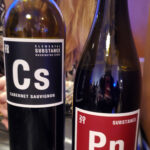2021 Wine Vintage Report
🏆 Was 2021 a Good Wine Vintage Year?
2021 was a year of contrasts, with extreme weather reducing yields, but still allowing for high-quality wines.
In the northern hemisphere, Europe saw a mixed year. France, Italy, and Spain all struggled with inconsistent weather and lower yields, but still made good wine. In the US, it was a good year across the board for all major states.
In the southern hemisphere, South America had a pretty good year. Chile had its highest yield ever, while Argentina and Uruguay still had good enough years too. Australia also delivered a record-breaking yield of excellent quality; New Zealand and South Africa both also produced great wine.
It was a pretty good year for both Old World and New World regions. A good year for precise, classic Old Worlds, and a good year for expressive New Worlds.
Let’s dig in to 2021.
📉 Global Wine Trends in 2021
🌍🍇 Global wine production in 2021 was 240 million hectoliters, down 7.7% from 2020. A rough weather year.
🌎🍷 Global wine consumption in 2021 was 234 million hectoliters, up 1.3% from 2020. Consumption has been down year to year lately, but I would wage a guess that people were at home during COVID this year enjoying an extra couple bottles.
🌐 The 2021 Vintage by Country
📍 The Big Four
France, Italy, Spain, and the US consistently dominate the modern global wine scene.
 FRANCE produced 37.6 million hectoliters of wine in 2021, a notably low yield due to spring frosts, mildew, and regional droughts. Despite these challenges, quality remained high. Prices are expected to rise as a result.
FRANCE produced 37.6 million hectoliters of wine in 2021, a notably low yield due to spring frosts, mildew, and regional droughts. Despite these challenges, quality remained high. Prices are expected to rise as a result.
- BORDEAUX reds, especially from the Médoc, show excellent promise for this vintage.
- SAUTERNES produced a small but exceptional vintage, standing out in 2021.
- BURGUNDY faced frosts and a cool summer, resulting in more reds than whites. The whites were particularly high in quality.
- BEAUJOLAIS are fresher this year, offering a lighter and more vibrant profile.
- CHAMPAGNE overcame struggles to produce potentially incredible wines.
- ALSACE also emerged through challenges to create some outstanding wines.
- THE LOIRE VALLEY had mixed results overall, with some standout whites.
- THE RHÔNE VALLEY saw whites outperform reds in terms of quality this year.
 ITALY is giving me conflicting reports on production volume. Official OIV metrics put it at 50.2 million hectoliters, an impressive yield. However, each region seems to report decreases. I suspect a typo in the OIV data, but I can’t be sure. Anyway!
ITALY is giving me conflicting reports on production volume. Official OIV metrics put it at 50.2 million hectoliters, an impressive yield. However, each region seems to report decreases. I suspect a typo in the OIV data, but I can’t be sure. Anyway!
Italy had a challenging 2021 vintage. The year started with a mild winter and plentiful rainfall, setting the stage for good vines. But April frosts dealt them a blow, especially in Tuscany, Lazio, and Umbria, in the central and north regions. The south faced a hot summer and much less rain, though late rains helped pull them through. Valpolicella and Fruili may be 2021’s standout regions, while Piemonte and Tuscany still maintained quality but saw more struggles. Sicily and Puglia also had fine quality grapes.
 SPAIN produced 35.5 million hectoliters of wine in 2021. Challenging and varied weather conditions complicated winemaking efforts all year. Spring frosts, intense summer heat, and sporadic storms impacted yields, with La Mancha even seeing reductions of up to 50%. Despite the challenges, quality remained strong, though pricing may rise.
SPAIN produced 35.5 million hectoliters of wine in 2021. Challenging and varied weather conditions complicated winemaking efforts all year. Spring frosts, intense summer heat, and sporadic storms impacted yields, with La Mancha even seeing reductions of up to 50%. Despite the challenges, quality remained strong, though pricing may rise.
Rioja faced late frosts and mildew, but the quality should turn out alright. Ribera del Duero had a long, sunny growing season and produced some of the best aging-potential power wines all year. Montsant and Priorat saw low yields but high quality, while Rías Baixas actually increased yields.
 THE UNITED STATES produced 24.1 million hectoliters of wine in 2021–an average-sized yield. High heat across the west lowered yields but enhanced quality.
THE UNITED STATES produced 24.1 million hectoliters of wine in 2021–an average-sized yield. High heat across the west lowered yields but enhanced quality.
 CALIFORNIA had a lower-yielding year, but exceptional in quality. This was a welcome relief after the challenges of the last couple years. A dry, cool winter transitioned into a warm spring and moderate summer. Drought conditions reduced yields but concentrated the grapes nicely. In Napa, despite limited quantities, it was a great year across the board. Just watch out for higher prices for this year.
CALIFORNIA had a lower-yielding year, but exceptional in quality. This was a welcome relief after the challenges of the last couple years. A dry, cool winter transitioned into a warm spring and moderate summer. Drought conditions reduced yields but concentrated the grapes nicely. In Napa, despite limited quantities, it was a great year across the board. Just watch out for higher prices for this year. WASHINGTON STATE had a very warm season and a pretty low yield. Despite the heat and other struggles, winemakers reported good wines with great acidity this year–just not as much harvested as they would’ve liked!
WASHINGTON STATE had a very warm season and a pretty low yield. Despite the heat and other struggles, winemakers reported good wines with great acidity this year–just not as much harvested as they would’ve liked! OREGON had extreme heat in the summer and a cooler fall harvest. Small berries with concentrated flavors thrived this year. The Willamette Valley produced fresh and vibrant Pinot Noirs, and the Columbia Gorge had some of its best white wines ever.
OREGON had extreme heat in the summer and a cooler fall harvest. Small berries with concentrated flavors thrived this year. The Willamette Valley produced fresh and vibrant Pinot Noirs, and the Columbia Gorge had some of its best white wines ever. NEW YORK STATE had a big harvest this year. It was a wet year, so extra attention had to be paid to prevent disease from spreading. Warm nights may have reduced acidity in some wines. Winemakers were especially excited about reds this year.
NEW YORK STATE had a big harvest this year. It was a wet year, so extra attention had to be paid to prevent disease from spreading. Warm nights may have reduced acidity in some wines. Winemakers were especially excited about reds this year.
📍 Europe
The heart of the wine world, Europe boasts centuries of expertise and massive variety.
 PORTUGAL produced 7.4 million hectoliters of wine in 2021. A balanced growing season with an early budburst and a mild year helped winemakers get back on track after previous drought-affected years. Moderate rain helped mature grapes, and winemakers report good balance and freshness, if somewhat reduced alcohol content. Vinho Verde should be excellent quality this year, and the Douro will likely have light and fresh wines. For Port, 2021 is expected to be more about balance and sophistication rather than power. Flexible harvest timing allowed producers to bring in grapes at optimal conditions. Although they’re optimistic about the year, we may not see widespread vintage declarations.
PORTUGAL produced 7.4 million hectoliters of wine in 2021. A balanced growing season with an early budburst and a mild year helped winemakers get back on track after previous drought-affected years. Moderate rain helped mature grapes, and winemakers report good balance and freshness, if somewhat reduced alcohol content. Vinho Verde should be excellent quality this year, and the Douro will likely have light and fresh wines. For Port, 2021 is expected to be more about balance and sophistication rather than power. Flexible harvest timing allowed producers to bring in grapes at optimal conditions. Although they’re optimistic about the year, we may not see widespread vintage declarations.
 GERMANY produced 8.4 million hectoliters of wine in 2021. It was a challenging year, marked by extreme weather and devastating summer floods in regions like Ahr, which tragically affected lives and infrastructure. A cold, wet spring delayed flowering, while the humid summer brought rain and disease pressure, demanding constant vigilance against mildew. Despite these hardships, a warm, dry autumn let grapes ripen under more ideal conditions with better acidity and aromatics. Quality varied significantly across regions and estates, so while results are mixed, the best wines from this vintage show excellent clarity, precision, minerality, and lightness.
GERMANY produced 8.4 million hectoliters of wine in 2021. It was a challenging year, marked by extreme weather and devastating summer floods in regions like Ahr, which tragically affected lives and infrastructure. A cold, wet spring delayed flowering, while the humid summer brought rain and disease pressure, demanding constant vigilance against mildew. Despite these hardships, a warm, dry autumn let grapes ripen under more ideal conditions with better acidity and aromatics. Quality varied significantly across regions and estates, so while results are mixed, the best wines from this vintage show excellent clarity, precision, minerality, and lightness.
 AUSTRIA produced 2.5 million hectoliters of wine in 2021. It was an exceptional year, delivering fresh, elegant wines with great potential for aging. A dry winter and cool spring delayed flowering, but Austria was lucky enough to avoid the severe frosts that chilled much of Europe this year. Summer was all over the place, with storms and hail that caused damage in regions like the Weinviertel and Wachau. But September came through with warm days and cool nights, ripening grapes perfectly. Whites like Grüner Veltliner and Riesling are fresh and aromatic, especially from cooler sites. Red wines like Blaufränkisch and Pinot Noir show great depth and complexity. Sweet wines also had great botrytis conditions. This vintage is one of Austria’s finest in recent memory.
AUSTRIA produced 2.5 million hectoliters of wine in 2021. It was an exceptional year, delivering fresh, elegant wines with great potential for aging. A dry winter and cool spring delayed flowering, but Austria was lucky enough to avoid the severe frosts that chilled much of Europe this year. Summer was all over the place, with storms and hail that caused damage in regions like the Weinviertel and Wachau. But September came through with warm days and cool nights, ripening grapes perfectly. Whites like Grüner Veltliner and Riesling are fresh and aromatic, especially from cooler sites. Red wines like Blaufränkisch and Pinot Noir show great depth and complexity. Sweet wines also had great botrytis conditions. This vintage is one of Austria’s finest in recent memory.
 Switzerland produced 0.6 million hectoliters of wine in 2021.
Switzerland produced 0.6 million hectoliters of wine in 2021.
 Hungary produced 2.6 million hectoliters of wine in 2021.
Hungary produced 2.6 million hectoliters of wine in 2021.
 Greece produced 2.4 million hectoliters of wine in 2021.
Greece produced 2.4 million hectoliters of wine in 2021.
 Czechia produced 0.6 million hectoliters of wine in 2021.
Czechia produced 0.6 million hectoliters of wine in 2021.
 Slovakia produced 0.3 million hectoliters of wine in 2021.
Slovakia produced 0.3 million hectoliters of wine in 2021.
 Slovenia produced 0.6 million hectoliters of wine in 2021.
Slovenia produced 0.6 million hectoliters of wine in 2021.
 Croatia produced 0.5 million hectoliters of wine in 2021.
Croatia produced 0.5 million hectoliters of wine in 2021.
 Georgia produced 1.9 million hectoliters of wine in 2021.
Georgia produced 1.9 million hectoliters of wine in 2021.
 ROMANIA produced 4.5 million hectoliters of wine in 2021. Some regions had ideal weather; others, much less so. In Recaș, a delayed bud burst helped avoid frost damage, and a dry, warm summer led into a mild autumn. These conditions allowed for optimal ripeness, producing exceptional reds like Merlot and Fetească Neagră alongside classic whites. Romania saw high quality across the board.
ROMANIA produced 4.5 million hectoliters of wine in 2021. Some regions had ideal weather; others, much less so. In Recaș, a delayed bud burst helped avoid frost damage, and a dry, warm summer led into a mild autumn. These conditions allowed for optimal ripeness, producing exceptional reds like Merlot and Fetească Neagră alongside classic whites. Romania saw high quality across the board.
 Moldova produced 1.4 million hectoliters of wine in 2021.
Moldova produced 1.4 million hectoliters of wine in 2021.
 Russia produced 4.3 million hectoliters of wine in 2021.
Russia produced 4.3 million hectoliters of wine in 2021.
 Bulgaria produced 0.9 million hectoliters of wine in 2021.
Bulgaria produced 0.9 million hectoliters of wine in 2021.
 Luxembourg produced 0.1 million hectoliters of wine in 2021.
Luxembourg produced 0.1 million hectoliters of wine in 2021.
 Cyprus produced 0.1 million hectoliters of wine in 2021.
Cyprus produced 0.1 million hectoliters of wine in 2021.
 THE UNITED KINGDOM produced about 67,500 hectoliters of wine in 2021. It was a challenging year. Late spring frosts damaged vines, and heavy rains impacted flowering. A cool, humid summer led to high disease pressure. However, a warm September and October helped save the season for many growers, resulting in good fruit and good-enough yields for the vintners that managed diseases well. It was a good year for high-acid aged sparkling wines. Still/non-sparkling wine quality was more variable, but should largely be okay.
THE UNITED KINGDOM produced about 67,500 hectoliters of wine in 2021. It was a challenging year. Late spring frosts damaged vines, and heavy rains impacted flowering. A cool, humid summer led to high disease pressure. However, a warm September and October helped save the season for many growers, resulting in good fruit and good-enough yields for the vintners that managed diseases well. It was a good year for high-acid aged sparkling wines. Still/non-sparkling wine quality was more variable, but should largely be okay.
📍 North & South America
The Americas continue to expand their influence, from the rugged Andes to Canada’s icy valleys.
 ARGENTINA produced 12.5 million hectoliters of wine in 2021. Cooler-than-average temperatures and heavy rainfall created challenges for vintners, but also created opportunities for elegant wines. Spring frosts in Eastern Mendoza and San Juan, amongst other regions, reduced yields, while a cool and rainy summer slowed ripening and delayed harvests in Cuyo. A dry autumn helped balance the harvest out, resulting in fresh, moderated wines. Northern regions, like the Calchaquí Valleys, had a drier and more typical season, and produced concentrated reds. Patagonia saw and dry and windy summer with warm days and cool nights, which resulted in fresher, low-acidity wines. While 2021 wasn’t a standout year across Argentina, it wasn’t bad, either.
ARGENTINA produced 12.5 million hectoliters of wine in 2021. Cooler-than-average temperatures and heavy rainfall created challenges for vintners, but also created opportunities for elegant wines. Spring frosts in Eastern Mendoza and San Juan, amongst other regions, reduced yields, while a cool and rainy summer slowed ripening and delayed harvests in Cuyo. A dry autumn helped balance the harvest out, resulting in fresh, moderated wines. Northern regions, like the Calchaquí Valleys, had a drier and more typical season, and produced concentrated reds. Patagonia saw and dry and windy summer with warm days and cool nights, which resulted in fresher, low-acidity wines. While 2021 wasn’t a standout year across Argentina, it wasn’t bad, either.
 CHILE produced 13.4 million hectoliters of wine in 2021. This is their highest yield in history! Cool, wet conditions made it a standout year for fresh wines. Winter rains helped stave off a drought, despite climate change putting more and more pressure on water usage overall. Some localized spring frosts reduced yields in some areas, especially for white grapes. Summer was wet too, but cool temps allowed for slow and steady ripening. Andes regions like Maipo and Colchagua produced reds with especially ripe tannins and moderate alcohol levels. 2021 reminded some vintners of the highly-regarded 2018 vintage–so despite challenges, it was a great year.
CHILE produced 13.4 million hectoliters of wine in 2021. This is their highest yield in history! Cool, wet conditions made it a standout year for fresh wines. Winter rains helped stave off a drought, despite climate change putting more and more pressure on water usage overall. Some localized spring frosts reduced yields in some areas, especially for white grapes. Summer was wet too, but cool temps allowed for slow and steady ripening. Andes regions like Maipo and Colchagua produced reds with especially ripe tannins and moderate alcohol levels. 2021 reminded some vintners of the highly-regarded 2018 vintage–so despite challenges, it was a great year.
 Brazil produced 2.9 million hectoliters of wine in 2021.
Brazil produced 2.9 million hectoliters of wine in 2021.
 URUGUAY produced 0.7 million hectoliters of wine in 2021. It was a classic and balanced year, with a long ripening period and healthy yield. February rains may have impacted the quality of some Pinot Noir produced, but it was a good year for fresh wines with good acidity aside from that.
URUGUAY produced 0.7 million hectoliters of wine in 2021. It was a classic and balanced year, with a long ripening period and healthy yield. February rains may have impacted the quality of some Pinot Noir produced, but it was a good year for fresh wines with good acidity aside from that.
📍 Oceania
Oceania’s unique climates and soils produce globally distinctive wines.
 AUSTRALIA produced 14.8 million hectoliters of wine in 2021, which represented a return to healthy harvest levels after the devastating wildfires last year. In fact, this was Australia’s biggest yield ever. The calm, warm, and sunny conditions in South Australia were excellent, resulting in both high quality and high quantity. Grenache should do particularly well this year, as well as Shiraz and Cabernet Sauvignon from Coonawarra. McLaren Vale also had an excellent year. The east coast faced severe weather, but despite the rain, these regions still produced good wine.
AUSTRALIA produced 14.8 million hectoliters of wine in 2021, which represented a return to healthy harvest levels after the devastating wildfires last year. In fact, this was Australia’s biggest yield ever. The calm, warm, and sunny conditions in South Australia were excellent, resulting in both high quality and high quantity. Grenache should do particularly well this year, as well as Shiraz and Cabernet Sauvignon from Coonawarra. McLaren Vale also had an excellent year. The east coast faced severe weather, but despite the rain, these regions still produced good wine.
 NEW ZEALAND produced 2.7 million hectoliters of wine in 2021, a smaller-than-average harvest even as demand for New Zealand Sauvignon Blanc is ever on the rise. A cool spring and late frosts will lead to some unhappy customers who won’t be able to get enough out of the country as they wanted to. The one region to increase its crop was Central Otago. However, all regions reported excellent quality, thanks to a warm and dry summer concentrating fruit flavors.
NEW ZEALAND produced 2.7 million hectoliters of wine in 2021, a smaller-than-average harvest even as demand for New Zealand Sauvignon Blanc is ever on the rise. A cool spring and late frosts will lead to some unhappy customers who won’t be able to get enough out of the country as they wanted to. The one region to increase its crop was Central Otago. However, all regions reported excellent quality, thanks to a warm and dry summer concentrating fruit flavors.
📍 Africa & Asia
Emerging markets in Africa and Asia bring fresh perspectives to the industry.
 SOUTH AFRICA produced 10.8 million hectoliters of wine in 2021. There was some chaos this year as President Ramaphosa placed bans on alcohol sales in an attempt to get people to gather less and thus halt the spread of COVID. Despite those uncertainties, the country had a great yield, after cool conditions and lots of rain. The wet winter replenished the water table, and the cooler spring delayed flowering, allowing for a slow and even ripening. Whites should be fresh and aromatic this year, while reds are likely structured, spicy, and rich. It’s a good year for South African wines.
SOUTH AFRICA produced 10.8 million hectoliters of wine in 2021. There was some chaos this year as President Ramaphosa placed bans on alcohol sales in an attempt to get people to gather less and thus halt the spread of COVID. Despite those uncertainties, the country had a great yield, after cool conditions and lots of rain. The wet winter replenished the water table, and the cooler spring delayed flowering, allowing for a slow and even ripening. Whites should be fresh and aromatic this year, while reds are likely structured, spicy, and rich. It’s a good year for South African wines.
 China produced 5.9 million hectoliters of wine in 2021.
China produced 5.9 million hectoliters of wine in 2021.
Sources: ESM, Wine-Searcher, OIV, Alliance Wines (2), Vintage Wine & Port, Washington Wines, Oregon Wine, NYup, Jancis Robinson (2), K&L Wines, Napa Vintners, South America Wine Guide, Austrian Wine, English Wine.
🍷 Wines from 2021 I’ve Tried
See all Vintages (Years) of Wine, or jump straight to: 2012, 2013, 2014, 2015, 2016, 2017, 2018, 2019, 2020, 2021, 2022, 2023, or 2024. See also: No Vintage.




